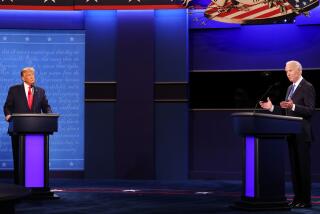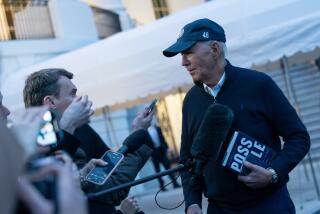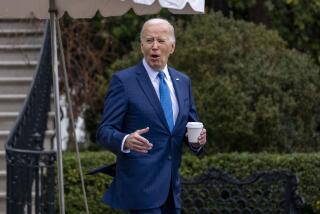U.S. presidents outlive other men of their era, study finds
Do U.S. presidents really age twice as fast as the rest of us while they occupy the Oval Office?
Dr. Michael Roizen says the answer is yes. And he sounds like he ought to be a reliable source. Roizen graduated near the top of his medical school class at UC San Francisco, did his residency at a Harvard hospital, edited six medical journals and currently serves as chairman of the Wellness Institute at the esteemed Cleveland Clinic.
Roizen is also the guy behind RealAge, whose premise is that one’s calendar age isn’t necessarily in sync with the actual wear and tear on the body. (For instance, Roizen is 65 years old according to the calendar, but his RealAge is only 43.8, according to the RealAge website.) Along with celebrity doctor Dr. Mehmet Oz, he cowrote “You: The Owner’s Manual” and a related series of books.
Apparently, Roizen applied some of this thinking to 20th century presidents and to George W. Bush. In the days leading up to President Obama’s inauguration, Roizen told CNN that “The typical person who lives one year ages one year. The typical president ages two years for every year they are in office.”
In August, when Obama celebrated his 50th birthday, CBS News repeated the claim that “presidents undergo a process of accelerated aging while in office,” citing the CNN report.
This caught the eye of S. Jay Olshansky, a sociologist at the University of Illinois at Chicago’s School of Public Health. He is also a research associate at the University of Chicago’s Center on Aging, and studying the limits of human longevity – and the health and policy consequences of same – is his specialty.
Olshansky decided to put Roizen’s claim to the test with actual data. Here’s how he did it:
First, Olshansky looked up the age of each U.S. president when he was inaugurated, along with his age at death if he died of natural causes. (Presidents who were killed in office were excluded from the analysis.) Based on the age at inauguration, Olshansky used life tables from the Social Security Administration to calculate each president’s remaining life expectancy. (For presidents who served during the 1700s and 1800s, he used life tables from the French Human Mortality Database, since there were no U.S. records at that time.) But he modified that life expectancy by subtracting two days of remaining life for each day in the White House.
Of the 34 presidents who died of natural causes, 23 lived longer than his modified life expectancy (the one that took account of his supposed accelerated aging while serving as commander in chief). Olshansky calculated that for these presidents, their average estimated age at death was 67.0 years, but in real life they lived to an agerage age of 78.0 years. For the 11 presidents who died before reaching their estimated life expectancy (which was 67.8 years, on average), their average age at actual death was 62.1 years. His results were published Tuesday in the Journal of the American Medical Assn.
So U.S. presidents lived longer than expected in about two-thirds of cases. In addition, Olshansky noted, “all living presidents have either already exceeded the estimated life span of all U.S. men at their age of inauguration or are likely to do so.”
What accounts for the longevity of presidents? After all, it would seem to stand to reason that the being Leader of the Free World would shave at least a few years off one’s life. But Olshansky gave two explanations for his findings:
1. In order to live long enough to become president, all of the men in the study had already survived “the most perilous early years of life.”
2. In addition, all but 10 of the presidents had three other things going for them – a college education, wealth and access to the best medical care at the time. Studies have linked these three factors to longevity.
“The graying of hair and wrinkling of skin seen in presidents while in office are normal elements of human aging,” Orshansky wrote. “Even if these signs of aging did appear at a faster rate for presidents, this study shows that this does not mean that their lives are shortened.”
Return to the Booster Shots blog.
More to Read
Sign up for Essential California
The most important California stories and recommendations in your inbox every morning.
You may occasionally receive promotional content from the Los Angeles Times.











